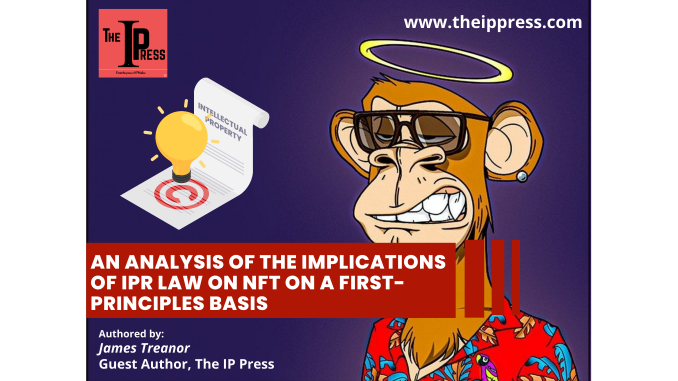
NFTs, or Non-Fungible Tokens, are a unique manner of expressing an asset as an Ethereum-based asset. Each NFT is unique, with its digital signature that can be manufactured with just a few basic computer abilities. It is non-fungible since it cannot be compared to another NFT. On the other hand, fiat currencies and cryptocurrencies are fungible, which means that one dollar is always equal to another dollar. They’re a type of digital certificate of authenticity that’s encoded as a blockchain token and can be used to verify digital artwork, among other things.
Thanks to digital contracts on the Ethereum blockchain, content creators now have more control. NFT projects are based on decentralized, incorruptible blockchain technology. Art, music, in-game items, and films are digital assets that depict real-world objects. They’re frequently encoded with the same underlying software as many other cryptos, and they’re bought and traded online, frequently with bitcoin. Anyone with a computer can create an NFT and post it on the internet, with the largest market being Open Sea.
What is the impact of web3.0 on creating a new medium for art?
It’s a new medium for artwork, whether it’s music, photos, GIFs, videos, jpegs, mp3s, or any other file format. Paintings were previously created on cave walls, then transferred to paper, Pinterest, and the blockchain. The medium shifts, but the art remains the same, and we’re seeing one of those shifts now with NFT. Previous mediums are becoming obsolete and being replaced by new ones, as we saw with the transition from web 2.0 to web 3.0; thus, one must adapt to this “wild, wild, web” medium as soon as possible.
Only a limited percentage of digital art—digital images that are live and circulated on the internet—is currently authenticated by NFT. Artists and gallerists are increasingly using NFTs to sell stills or short clips from more complicated, often generative, and interactive digital artworks, which can be obtained for less money than the reduced images offered as NFTs. Consumers are also using NFTs to track the legitimacy of products. That is why luxury brands such as Louis Vuitton, Prada, Cartier, and Tiffany have recently begun using the AURA blockchain to allow clients to track the legitimacy of their branded luxury items using NFTs. This transformation in the medium is a technological watershed moment with far-reaching cultural and legal consequences.
What IP issues is it causing?
Despite rumors that NFTs will be officially regulated under the Markets in Crypto-Assets Regulation (MiCAR), they are still unregulated. Existing laws and regulations will still apply, and any company issuing, dealing, or exchanging NFTs would have to consider several commercial and legal considerations before entering into any contractual obligations.
Defining the scope of the NFT
Issuers must be transparent about what rights are being “sold” through the NFT. Certification of asset ownership, a license to utilize intellectual property rights (IPR), or even contractual rights, such as receiving or using a certain asset (whether digital or virtual) or obtaining benefits, are examples of these. If there is clarity upfront, the issuer will avoid giving up unanticipated rights and any purchaser claims alleging misrepresentation of the rights on a sale.
Similarly, the purchaser of an NFT must be aware of what they are purchasing. For example, if the NFT includes smart contract capabilities, this will be encoded within it, and may not be visible on the surface. Purchaser due diligence is required to determine what rights and liabilities are being bought, especially if they may impact the NFT’s and underlying asset’s current or future value.
The commercial rationale for issuing the NFT will primarily determine what an NFT represents, how much is expected to be produced from selling it, and even whether it is capable of fractional ownership. Suppose the value of an NFT or the underlying asset depends on its scarcity. In that case, an issuer may desire to prevent fractionalization (and must ensure it can enforce those restrictions), and purchasers may seek assurances in this regard. Suppose the NFT or underlying asset is valuable. In that case, fractionalizing the NFT (without dividing the underlying asset) may offer up investment options for those who would otherwise be unable to do so. These considerations will also influence the content of any sales conditions or smart contracts and the legal framework in place.
Intellectual property rights
Issuers will want to keep a close grip on the use of any IPR linked with an NFT by purchasers. At first look, selling a claim to a unique content piece may appear the same as a copyright assignment. However, the issuer normally keeps copyright and other intellectual property rights, and the buyer is allowed the right to show the underlying asset. The issuer’s valuable brand must be preserved; hence care must be taken in how and whether IPR is licensed through the sale and subsequent transfer of the NFT (including effective remedies if their IPR is misused).
The ownership of an NFT is determined by any code or smart contract built in the NFT (or the terms of sale in a traditional contract format). For example, NFT producers may construct an NFT to automate the payment of royalties or commissions on any resale of the tokens. The issuer will be able to follow resales because they will be stored on the blockchain where the NFT is held, and payment might be automated via a smart contract within the NFT.
Intellectual property rights and NFTs
The protection of intellectual property rights regarding NFTs is a fascinating topic. The fact that an NFT is developed to represent an underlying piece of art or other invention does not imply that the creator or any subsequent owner of the NFT will own the underlying intellectual property rights, such as the copyright.
To reproduce the underlying work itself, an NFT owner must specifically obtain an assignment or license of the underlying rights from the originator or author of the original work or any later owner of those rights. The owner of the underlying IP rights may grant a license but place additional restrictions on how the work in question can be utilized in the NFT.
The NFT for a video of a slam-dunk by star US basketball player LeBron James was issued as part of a series of limited-edition digital collector’s cards of NBA highlight clips that can be bought and sold on the ‘Top Shot’ marketplace, is a popular example. Even if the card representing the dunk sells for a lot of money, the NBA still owns the rights to the original film, and any reproduction of it is subject to NBA licensing rules.
Even if you are fortunate enough to own one of the rare NBA NFTs, you are still prohibited from altering the video moment captured in your NFT or selling any items related to your NFT without the NBA’s permission. Furthermore, it would be best if you did not use the moment in conjunction with “images, videos, or other forms of media that depict hatred, intolerance, violence, cruelty, or anything else that could reasonably be found to constitute hate speech or otherwise infringe upon the rights of others,” according to the license terms.
If you break the conditions of your license, platforms like Top Shot marketplace may suspend or deactivate your account or, in the case of Top Shot, remove your NFT’moment’ from its app – all at their discretion and without warning.
Sir Tim Berners-NFTs Lee’s sparked interest and were sold for $5.4 million at an online auction.
In this case, Sir Tim has no licensing restrictions because he owns the copyright to the source code, and he has the right to reproduce the code when constructing the NFT.
The protection of software
The software can be secured in a variety of ways. If the invention is captured as a technological system implemented utilizing specific software rather than the program itself, patent protection might be sought. Most software coding is protected by copyright in the exact expression of the coding in any medium and maybe secrecy, which protects the value of the coding or the algorithm(s) captured in the coding by not sharing it with others.
Sir Tim famously decided to make the source code for the World Wide Web open to the public at the time for the good of all: no concerns about confidentiality or others duplicating the source code.
However, if another software developer were enticed to publish valuable source code in NFTs available to a select few lucky buyers, they would have to consider how to handle the situation carefully. Although the owner of the NFT may not be able to impose secrecy limits, they should impose proper IP rights license constraints and ensure that such license restrictions are passed on to any succeeding owners.
Although this is a hypothetical circumstance, it does highlight some of the IP difficulties posed by NFTs. However, if another software developer were enticed to publish valuable source code in NFTs available to a select few lucky buyers, they would have to consider how to handle the situation carefully. Although the owner of the NFT may not be able to impose secrecy limits, they should impose proper IP rights license constraints and ensure that such license restrictions are passed on to any succeeding owners.
Although this is a hypothetical circumstance, it does highlight some of the IP difficulties posed by NFTs.

James Treanor
Author
James Treanor is an Intellectual Property expert and a graduate of the University of California. Founder of Brealant an IP Firm in the Philippines. Brealant is an accomplished IP services firm that focuses on intellectual property, with expertise in trademark and patent registration. The services they offer since its founding in 2002 have helped companies and individuals with the registration and management of all aspects of Intellectual Property
Leave a Reply